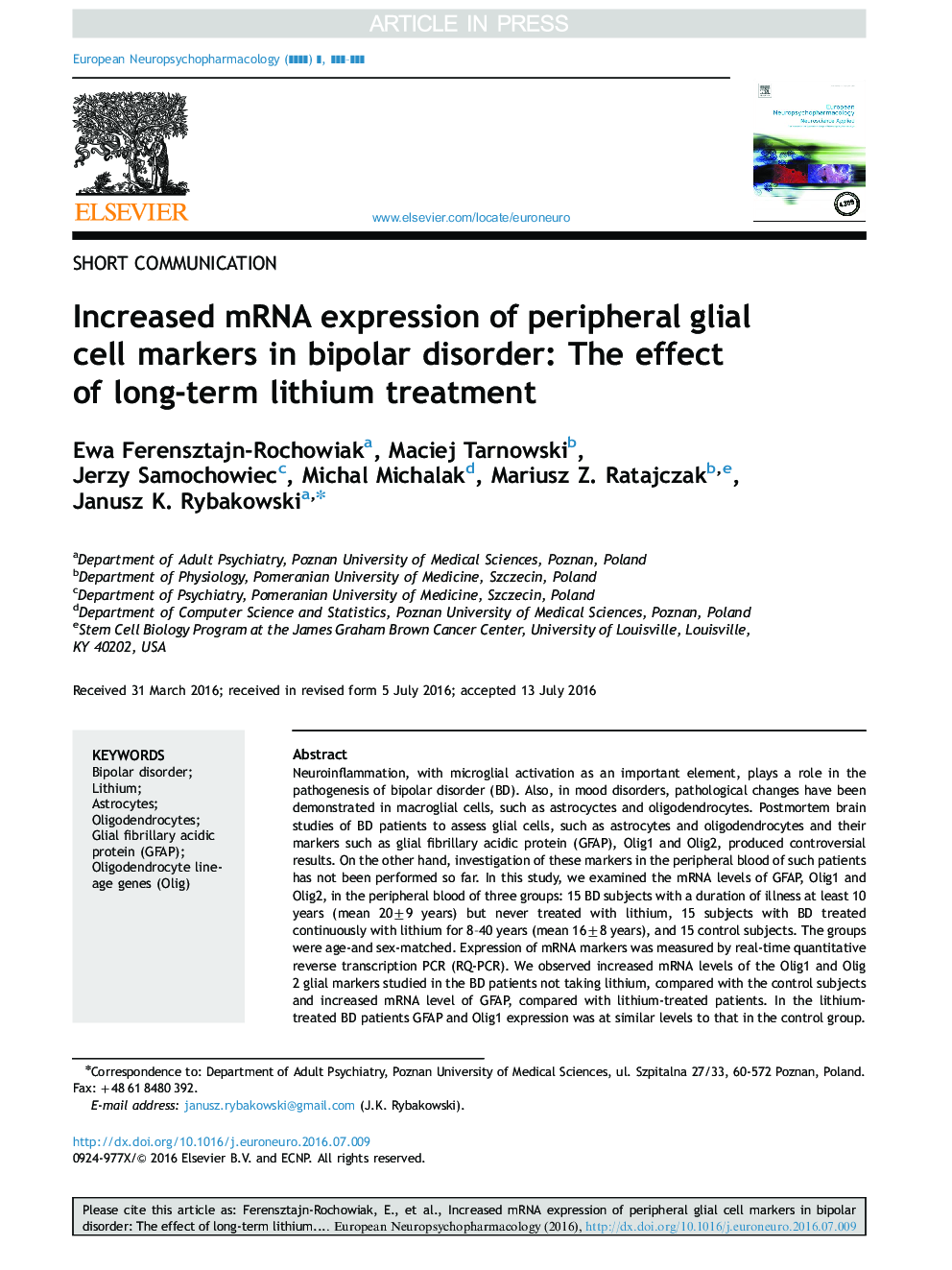| کد مقاله | کد نشریه | سال انتشار | مقاله انگلیسی | نسخه تمام متن |
|---|---|---|---|---|
| 4930862 | 1363350 | 2016 | 6 صفحه PDF | دانلود رایگان |
عنوان انگلیسی مقاله ISI
Increased mRNA expression of peripheral glial cell markers in bipolar disorder: The effect of long-term lithium treatment
دانلود مقاله + سفارش ترجمه
دانلود مقاله ISI انگلیسی
رایگان برای ایرانیان
کلمات کلیدی
موضوعات مرتبط
علوم زیستی و بیوفناوری
علم عصب شناسی
روانپزشکی بیولوژیکی
پیش نمایش صفحه اول مقاله

چکیده انگلیسی
Neuroinflammation, with microglial activation as an important element, plays a role in the pathogenesis of bipolar disorder (BD). Also, in mood disorders, pathological changes have been demonstrated in macroglial cells, such as astrocyctes and oligodendrocytes. Postmortem brain studies of BD patients to assess glial cells, such as astrocytes and oligodendrocytes and their markers such as glial fibrillary acidic protein (GFAP), Olig1 and Olig2, produced controversial results. On the other hand, investigation of these markers in the peripheral blood of such patients has not been performed so far. In this study, we examined the mRNA levels of GFAP, Olig1 and Olig2, in the peripheral blood of three groups: 15 BD subjects with a duration of illness at least 10 years (mean 20±9 years) but never treated with lithium, 15 subjects with BD treated continuously with lithium for 8-40 years (mean 16±8 years), and 15 control subjects. The groups were age-and sex-matched. Expression of mRNA markers was measured by real-time quantitative reverse transcription PCR (RQ-PCR). We observed increased mRNA levels of the Olig1 and Olig 2 glial markers studied in the BD patients not taking lithium, compared with the control subjects and increased mRNA level of GFAP, compared with lithium-treated patients. In the lithium-treated BD patients GFAP and Olig1 expression was at similar levels to that in the control group. However, Olig 2 expression was even higher than in the BD patients not taking lithium. The possible mechanisms concerning the higher expression of peripheral mRNA markers in BD patients may involve ongoing inflammatory process, compensatory mechanisms and regenerative responses. The beneficial effect of lithium may be related to its anti-inflammatory properties.
ناشر
Database: Elsevier - ScienceDirect (ساینس دایرکت)
Journal: European Neuropsychopharmacology - Volume 26, Issue 9, September 2016, Pages 1516-1521
Journal: European Neuropsychopharmacology - Volume 26, Issue 9, September 2016, Pages 1516-1521
نویسندگان
Ewa Ferensztajn-Rochowiak, Maciej Tarnowski, Jerzy Samochowiec, Michal Michalak, Mariusz Z. Ratajczak, Janusz K. Rybakowski,